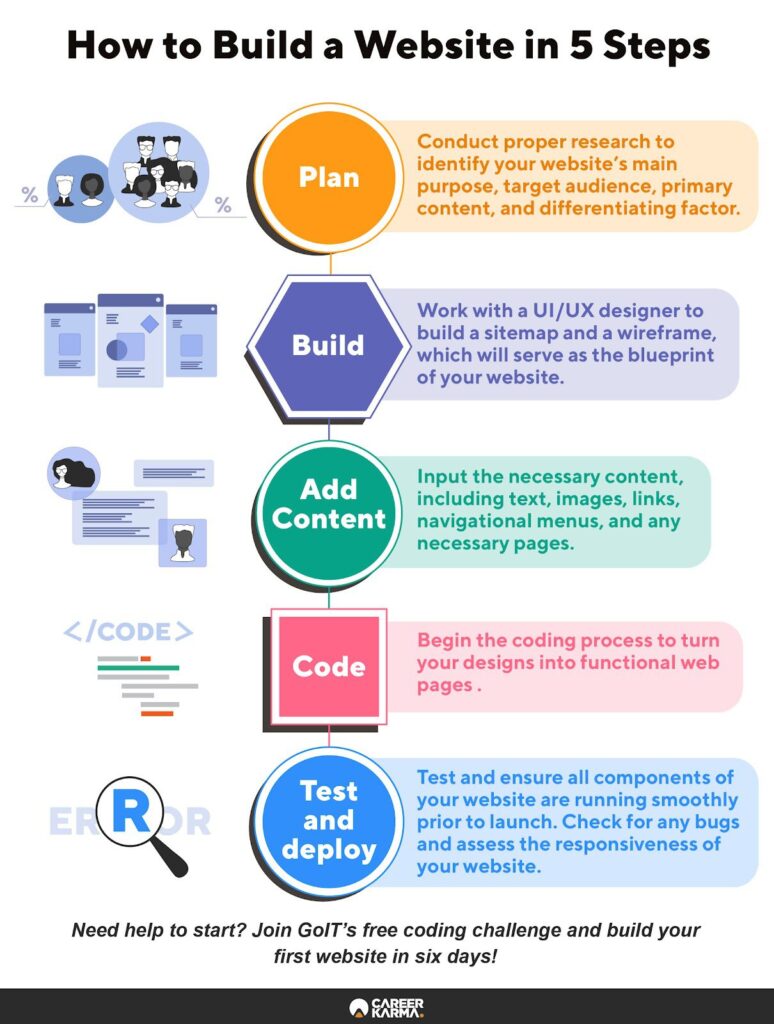
Building a website from scratch can be an incredibly rewarding experience. It grants you complete control over every aspect of your online presence, allowing you to craft a unique and personalized platform that perfectly reflects your vision. Unlike website builders, which often impose limitations on design and functionality, coding your own website opens up a world of possibilities.
This article will guide you through the essential steps involved in building a website from scratch. We’ll delve into the core languages of web development—HTML, CSS, and JavaScript—and explore how to leverage server-side technologies for dynamic content. Additionally, we’ll discuss open-source platforms that can streamline the process while still offering ample customization options.
HTML Coding for Website Structure
HTML (HyperText Markup Language) forms the foundation of every website. It defines the structure and content of your pages using elements and tags. Think of HTML as the skeleton of your website, providing the framework for text, images, links, and other elements to be displayed.
To begin coding in HTML, you’ll need a text editor. Popular choices include Notepad++, Sublime Text, and Visual Studio Code. These editors provide syntax highlighting and auto-completion features that make coding more efficient. Start by creating a new file with the extension “.html”. Within this file, you’ll use tags to define different elements. For instance, <p> tags enclose paragraphs of text, <h1> tags create headings, and <img> tags embed images.
Remember to properly close each tag using its corresponding closing tag (e.g., </p>, </h1>, </img>). HTML also utilizes attributes to provide additional information about elements. For example, the <a> tag for links uses the “href” attribute to specify the URL being linked to.
CSS Styling for Visual Design

While HTML provides the structure, CSS (Cascading Style Sheets) breathes life into your website by defining its visual appearance. CSS allows you to control colors, fonts, layouts, and other stylistic elements, transforming a basic HTML skeleton into a visually appealing and engaging website.
You can link CSS stylesheets to your HTML files using the <link> tag within the <head> section of your HTML document. CSS uses selectors to target specific HTML elements and apply styles. For example, h1 { color: blue; } would set all <h1> headings to blue text.
You can also use CSS properties to control various aspects of an element’s appearance, such as font size, line height, padding, margin, and background color. Experiment with different CSS rules to achieve the desired look and feel for your website.
JavaScript Functionality and Interactivity
JavaScript is the language that brings interactivity and dynamic behavior to websites. It allows you to create animations, handle user input, update content without page reloads, and much more. JavaScript code is typically embedded within HTML files using <script> tags.
You can use JavaScript to respond to user actions such as clicks, mouse movements, or form submissions. You can also fetch data from servers, manipulate the DOM (Document Object Model) to change website content dynamically, and implement complex interactions that enhance user engagement.
Server-Side Languages for Dynamic Content

For websites that require dynamic content generation, database interaction, and server-side processing, you’ll need to learn a server-side language. Popular choices include PHP, Python, Ruby, and Node.js.
These languages run on web servers and handle requests from users, process data, interact with databases, and generate HTML responses that are sent back to the user’s browser. Server-side languages allow you to create personalized content, manage user accounts, handle e-commerce transactions, and build complex web applications.
Open-Source Platforms for Customization
Open-source platforms like WordPress, Drupal, and Joomla provide a structured framework for building websites while offering extensive customization options. These platforms come with pre-built themes, plugins, and modules that can be tailored to your specific needs.
While using an open-source platform may involve less coding from scratch, you’ll still have the flexibility to modify core functionalities, create custom themes, and develop unique features. Open-source platforms also benefit from large communities of developers who contribute to their ongoing development and support.
Conclusion
Building a website from scratch empowers you with complete control over design, functionality, and content. By mastering HTML, CSS, JavaScript, and potentially server-side languages, you can create a truly unique online presence that reflects your vision. While the process may require time and effort, the rewards of building a custom website are immense.
